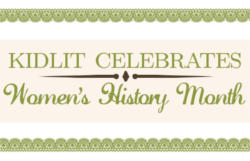March 29 - Today's post provided by Anita Silvey
Before I ever attempted to write I’ll Pass for Your Comrade: Women Soldiers in the Civil War, I worked as a family historian, or genealogist, for about twenty years. In that time I discovered why I knew only the first name of so many of my female ancestors. I grew to understand why a matrilineal descent line – from mother to mother to mother – is the toughest assignment in genealogy. I also learned to value small details, such as the mention of several quilts in a family will. At least I knew that this great-grandmother created them and that the family valued her work highly.
When I took on the project of writing about the 1,000 women who defied convention, put on men’s clothing, and went to fight in the Civil War, I knew that in many cases I would be building my book on small pieces of evidence. Sometimes all that we have of one of these soldiers is literally their bones, later identified when burial grounds were moved. For other women only one record exists – a newspaper article, a letter from a male soldier, or a detail in a Civil War regimental history.
Often my fabulous editor Dinah Stevenson would ask about a woman that I had presented in a paragraph, “Tell me the rest of her story. What happened to her?” Almost always, the answer to Dinah would be, “we don’t know. That is all we know about her.”
I admire Laurie Halse Anderson’s Independent Dames because she found an ideal format to utilize scraps of history to present the accomplishments of women. But I was writing a photo-essay of 112 pages. Hence I decided to devote each chapter to one of the stages of being a soldier – motivation, enlistment, training, battle, hospitals, prison camps, and coming home. Then for each one I selected a woman who left many records of her life– books, autobiographies, or letters – and allowed her to carry much of the chapter. Then I added in small vignettes about other women, less well-known, less recorded. To create a composite picture of the life of a female Civil War soldier, I had to become a quilter of words and images.
In this book, I pay tribute to these independent, idealistic, and driven women, who went to any length to do what they wanted to do. Like my female ancestors, they deserve to have their accomplishments recorded -- even if that means that as writers we have to work harder, be extremely creative, and do extensive research to reconstruct their stories.
Editor's Note:
Anita Silvey's latest project is the Children's Book-A-Day Almanac. Find out more about Anita Silvey on her website.













In the Civil War, women apparently didn't wait for approval. Now, 150 years later, the country is still debating whether or not it's appropriate for women to serve on the battlefront. A hot-button issue for sure. Here's a link to a recent article on the topic that appeared in Stars and Stripes. http://www.stripes.com/news/commission-to-recommend-allowing-women-in-combat-units-1.131807
ReplyDeleteNPR also recently aired a series called Women in Combat.